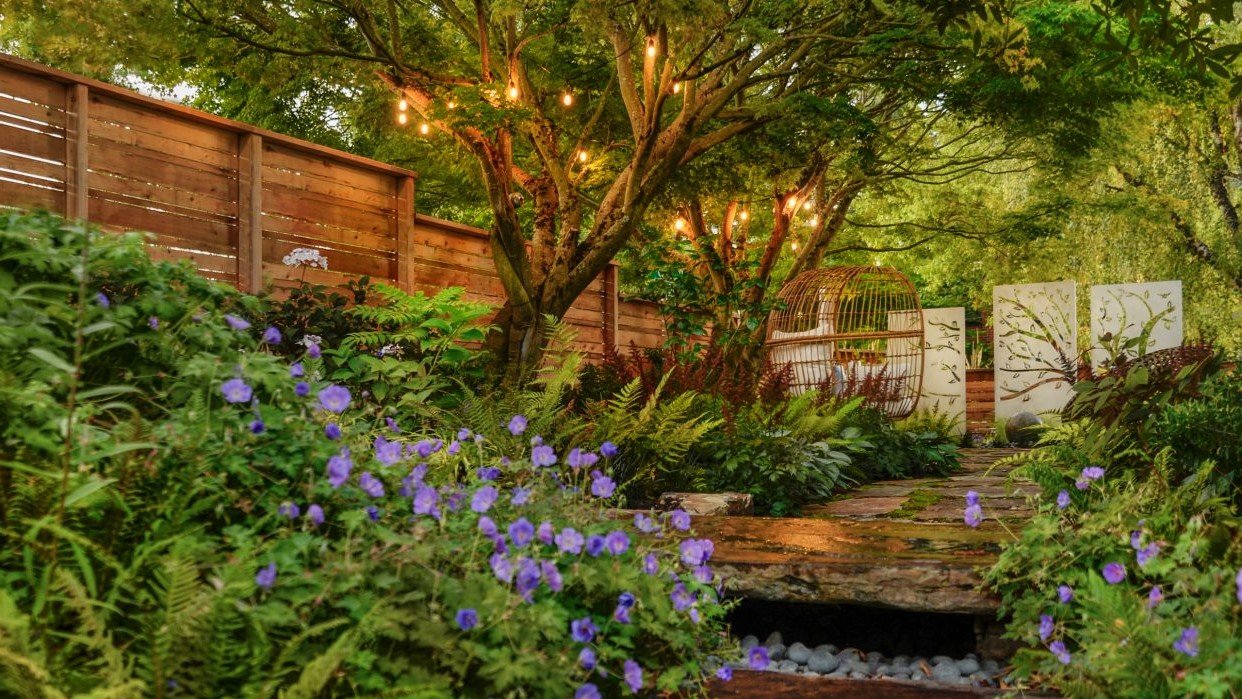How to create a garden that connects with nature and improves mental health
Gardens can connect us to the natural world in meaningful ways, whether we’re picking flowers for a table setting or pausing to watch bees and butterflies’ flutter through foliage.
Let’s take a moment to explore the less tangible ways we can design our gardens to foster connection with nature and in doing so, improve our mental health.
1. Plant something from your childhood
Gardens can be powerful places for connecting us to our roots. Perhaps you remember smelling a specific type of flower your grandmother grew, biting into an heirloom tomato or climbing among the branches of a certain type of tree.
Try putting one or more of these nostalgic plants in your own garden as a way to honour that memory or loved one.
2. Engage the senses
Scent is a powerful memory trigger. If there’s a fragrance you associate with a time period in your life or a loved one, adding this scent to your garden can bring you right back.
Adding plants for texture or for movement, like ornamental grasses that sway in the slightest breeze, is another way to engage the senses and make you feel more connected to a garden.
3. Slow your journey
Gardens are often places we go to wind down from the rush of everyday life. Think about ways you can set a garden up to help you slow down — perhaps by creating a meditation corner or simply adding more bends and curves to garden beds.
Using steppingstones, rather than a smooth paving material, can be a useful way of slowing your journey through a garden.
Ground covers grown between flagstones can also engage the senses with a tangy herbal smell if crushed.
4. Add a meaningful object
Find a home in your garden for an object with meaning, whether it’s a spiritual figure, an object passed down from a friend or family member, or something found on a trip.
You can elevate an object’s presence by mounting it on a pedestal or placing it at the base of a mature tree, with the trunk as a backdrop.
Meaningful objects, like small garden statues passed down from a loved one, can also be effective when tucked into garden beds. When your eye falls on them, you may remember that special person.
5. Welcome wildlife
Animals and insects give gardens life. The buzz of bees, the splash of a bird in a fountain can instantly grab your attention and make you feel more present in a garden.
Plant native species that act as host plants for pollinators or provide food for indigenous birds. Hang a birdhouse and put out a source of water, such as a birdbath or plant saucer filled with water.
By setting up your garden to help support the creatures around you, you can — in a small way — be connected to a larger natural ecosystem.
6. Celebrate the history of the site
You may have inherited landscape features that you might not have otherwise chosen. Instead of seeing these elements as eyesores, imagine the story behind them.
This shift in mindset may even make you feel more connected to the history of your home or garden and the people who came before you.
7. Add a secluded seating nook
Even if most of your garden is geared toward outdoor entertaining, you can tuck a bench or seats for a few people in an area away from the main gathering area. You may find that you gravitate toward these areas when you’d like to be quiet and just sit and gaze at the garden.
Look for half-hidden areas that feel more private, such as a side yard, an area tucked alongside a garden shed or a partially concealed spot behind plants.
8. Bring in water
Through engaging your senses and welcoming wild birds, water elements can help you feel more present in and connected to your garden.
Plus, in urban gardens, fountains that have a consistent trickle or splash can also help distract from the sounds of traffic and make the place feel more like a soothing retreat.
You don’t need a fancy or expensive fountain to bring water to your outdoor space. A simple design using a galvanized tank, a drilled stone or paver for the water to spill over, and an inexpensive fountain pump can create a lively recirculating fountain.
9. Take note of subtle seasonal changes
Part of the magic of gardens is that they are constantly changing and evolving. Slowing down and noting small changes — roses beginning to bloom over a trellis in spring or grasses turning tawny in late summer, say — can help connect you to the seasons.
Go a step further by including plants that you look forward to at each time of year.
10. Start a new tradition
Look for ways to connect future generations to a garden. Whether you plant a tree for the birth of your child or a niece, nephew or grandchild, or you have children place handprints in cast-concrete steppingstones and sign their name and the date, additions like these can make gardens feel more meaningful to the whole family.
Tell us: Enjoyed this article? Don’t forget to like and share.
And while you’re here, take our mortgage shredder challenge and discover how much you can save on your home and investment loans by using loansHub technology as your personal mortgage manager. To discover why loansHub and what we do, click here.
This article via Houzz does not constitute advice; readers should seek independent and personalised counsel from a trusted adviser that specialises in property, a tax accountant and property design specialist.



